Cooperative Research Units and the Appalachian LCC
There are 9 U.S. Geological Survey Fish and Wildlife Cooperative Research Units within the Appalachian LCC boundary that are conducting multi-scale and multi-species terrestrial and aquatic ecology research in the region, including trans-boundary projects involving multiple units and their cooperators. Current examples include Appalachian-wide research efforts seeking to understand the viability of the Allegheny woodrat, variable-density retention silviculture to improve cerulean warbler habitat, and environmental stressors to endangered freshwater mussels. The Coop Units and their personnel have taken an active role in helping the LCC develop a strong Science Needs Portfolio, including the identification of surrogate species and natural resource indicators for the region. Moreover, the LCC is helping the Coop Unit increase the effectiveness of their programs’ knowledge, development, and technology transfer to a wider array of federal, state, municipal, NGO and industry clients and information user-groups.
West Virginia Cooperative Research Unit
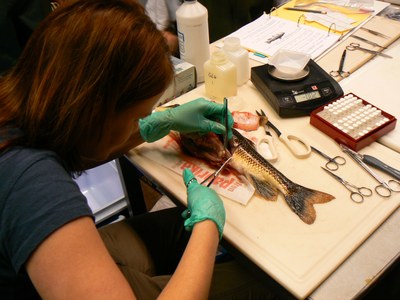 The West Virginia Unit's research program is focused on environmental impacts at the species and ecosystem levels. Wildlife research projects focus on the effects of anthropogenic disturbances, particularly timber harvesting and energy extraction, on wildlife populations and their habitats. Fisheries research projects focus on contaminants, brook trout restoration and systematics and ecology of West Virginia fishes. The West Virginia Unit's research program is focused on environmental impacts at the species and ecosystem levels. Wildlife research projects focus on the effects of anthropogenic disturbances, particularly timber harvesting and energy extraction, on wildlife populations and their habitats. Fisheries research projects focus on contaminants, brook trout restoration and systematics and ecology of West Virginia fishes.
Active Projects:
Allegheny Woodrat: Identifying Strategies to Conserve a Declining Species
Hypotheses regarding the decline of this species focus on food resources (forest conditions), disease, and habitat isolation. We propose to use datasets from throughout the range of the species to test predictions from these hypotheses and to identify risk factors. This analysis using existing datasets will help quantify a structured decision analysis that can be used to guide habitat management or population restoration actions.
Cheat Lake Biomonitoring Study
The study includes the following nine research tasks:
Fish biomonitoring downstream of Cheat Lake; Benthic macroinvertebrate resource biomonitoring downstream of Cheat Lake; Water quality biomonitoring downstream of Cheat Lake; Fish biomonitoring of Cheat Lake and Cheat embayments; Walleye population monitoring and stock assessment; Monitoring of adult walleye movement; Physical and chemical water quality characteristics of Cheat Lake; Aquatic vegetation mapping of Cheat Lake; Create a bathymetric map of Cheat Lake
Migration of silver phase and yellow phase American eels in relation to hydroelectric dams on the Shenadoah River
This study examines the upstream migration of eels in relation to eel specific fishways on dams of the Shenandoah River, and downstream migration of adult eels in relation to mortality caused by hydroelectric turbines.
Find more Active and Completed Projects here.
Pennsylvania Cooperative Research Unit
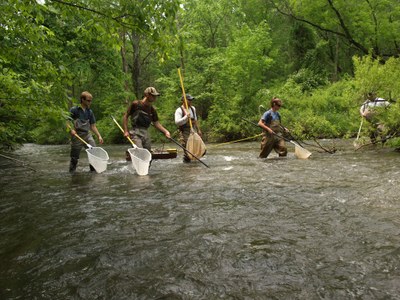 The Pennsylvania Cooperative Fish and Wildlife Research Unit is a cooperative venture of university, federal and state agencies, and non-governmental organizations. The U.S. Geological Survey provides administrative and salary support for three full-time research biologists. The Game Commission and the Fish and Boat Commission provide annual base funding, which is used primarily to conduct research projects designed in conjunction with state agencies. The School of Forest Resources at Pennsylvania State University provides clerical staff and administrative support, as well as office, laboratory, and storage space for the Unit. Also, the Wildlife Management Institute and U.S. Fish and Wildlife Service are cooperators. The Pennsylvania Cooperative Fish and Wildlife Research Unit is a cooperative venture of university, federal and state agencies, and non-governmental organizations. The U.S. Geological Survey provides administrative and salary support for three full-time research biologists. The Game Commission and the Fish and Boat Commission provide annual base funding, which is used primarily to conduct research projects designed in conjunction with state agencies. The School of Forest Resources at Pennsylvania State University provides clerical staff and administrative support, as well as office, laboratory, and storage space for the Unit. Also, the Wildlife Management Institute and U.S. Fish and Wildlife Service are cooperators.
Active Projects:
Trans-boundary management and conservation: linking large-scale dynamics to ecological monitoring and management
Our overarching objective is to use freshwater stream fish populations as model systems to develop a framework and tools for addressing the inherent challenges in performing trans-boundary research and for linking large-scale dynamics to ecological monitoring and management.
Using North American BBS Data to Evaluate Potential Consequences of Energy Development and Other Land Use Changes on Bird Populations
Existing data from the Breeding Bird Survey, linked to USGS land-use data and other spatially-explicit databases, will be used to develop spatially-explicit models of bird species abundance and distribution in the Northeast Appalachian Region. These models for bird species will be used to predict the consequences of changes in land use due to urban development, climate change, and drilling in Marcellus shale on bird species abundance and distribution for specified time frames.
Nations Fish Habitat at Multiple Spatial Scales in a Rapidly Changing Climate
The purpose of this project is to determine what impacts projected future land use and climate changes might have on the condition of stream habitat to support self-sustaining brook trout populations.
Find more Active and Completed Projects here.
New York Cooperative Research Unit
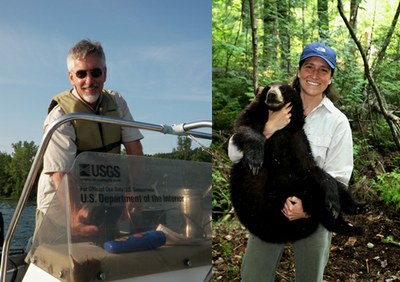 The New York Cooperative Research Unit pays particular attention to the resource problems and issues of the Northeastern States with New York as its focal point. Based at Cornell University in the Department of Natural Resources, we work cooperatively within a department structure, but with the option to transcend organizational lines when the need arises. Our efforts are directed not only at maintaining productive programs in our own areas of interest, but also in seeking funds for and coordinating the planning of other research and management faculty/staff at the University and within the New York State Department of Environmental Conservation and U. S. Fish and Wildlife Service's Northeast Regional Office. In accomplishing this we are aided by a select, high quality group of graduate students and research affiliates who understand science, people, and the need to grow and produce in their specialty. The New York Cooperative Research Unit pays particular attention to the resource problems and issues of the Northeastern States with New York as its focal point. Based at Cornell University in the Department of Natural Resources, we work cooperatively within a department structure, but with the option to transcend organizational lines when the need arises. Our efforts are directed not only at maintaining productive programs in our own areas of interest, but also in seeking funds for and coordinating the planning of other research and management faculty/staff at the University and within the New York State Department of Environmental Conservation and U. S. Fish and Wildlife Service's Northeast Regional Office. In accomplishing this we are aided by a select, high quality group of graduate students and research affiliates who understand science, people, and the need to grow and produce in their specialty.
Active Projects:
Density Estimation Of Fishers Using Non-Invasive Spatial Capture-Recapture Modeling
To estimate fisher density across the southern tier of New York, we are conducting a noninvasive, genetic spatially explicit capture-recapture study.
Allegheny Woodrat: Identifying Strategies To Conserve A Declining Species
Hypotheses regarding the decline of this species focus on food resources (forest conditions), disease, and habitat isolation. We propose to use datasets from throughout the range of the species to test predictions from these hypotheses and to identify risk factors. This analysis using existing datasets will help quantify a structured decision analysis that can be used to guide habitat management or population restoration actions. The results of the decision model will provide the foundation for a multi-state adaptive management program to maximize the effectiveness of ongoing management activities.
Population Status Of Carnivores
This project will develop models to evaluate population status of select carnivore species, using spatial capture-recapture methods.
Find more Active and Completed Projects here.
Georgia Cooperative Research Unit
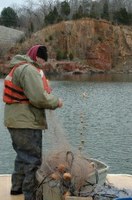 The Georgia Unit conducts research on a variety of topics including broad areas of life history, population dynamics, ecology, and management of important game and non-game fish and wildlife through the region. Recent research has been in partnership with a variety of agencies including the GA Department of Natural Resources, GA Power Company, National Fish and Wildlife Foundation, Nemours Wildlife Foundation, U.S. Army Corps of Engineers, U.S. Fish and Wildlife Service, and the U.S. Geological Survey. The Georgia Unit conducts research on a variety of topics including broad areas of life history, population dynamics, ecology, and management of important game and non-game fish and wildlife through the region. Recent research has been in partnership with a variety of agencies including the GA Department of Natural Resources, GA Power Company, National Fish and Wildlife Foundation, Nemours Wildlife Foundation, U.S. Army Corps of Engineers, U.S. Fish and Wildlife Service, and the U.S. Geological Survey.
Active Projects:
Time-series Analysis for Monitoring Indicator Species
This research project will involve analysis of priority data as identified by the U.S. Fish and Wildlife Servoce. An overarching research goal for this project is to advance time-series analysis for monitoring of important indicator species.
Responses of Targeted Herpetological Communities to Fire Management Practices in Pine-Oak Forests of the Great Smoky Mountains National Park
This project will investigate relationships between prescribed fire management and herptile community response in this area of the park. The investigation will rely on field sampling and predictive modeling approaches. The outcome of this study, along with a companion project on bird community associations with fire management, will help inform park managers about responses by forest fauna to the reintroduction of fire.
Multi-resolution Assessment of potential Climate Change Effects on Aquatic and Hydrologic Dynamics Part I: Estimating Ecological Change
The objective of this research is to develop tools that aquatic resource managers can use to predict the effects of climate-change and management actions on water availability and aquatic communities at local landscape-scales. We will model effects on aquatic biota at fine resolutions (i.e., stream networks), providing estimates of biological responses for alternative climate scenarios and potential management actions.
Find more Active and Completed Projects here.
|
Virginia Cooperative Research Unit
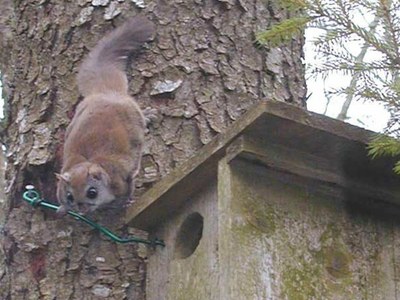 The Virginia Cooperative Fish and Wildlife Research Unit is a vibrant and intergral part and partner with the Virginia Tech Department of Fisheries and Wildlife Conservation that supports graduate research and education. It consists of two federal scientists, an unit administrator, 12 graduate students and 1 post-doctoral researcher along with numerous "cooperating" faculty and graduate students whom work in association with the unit and its projects. The Virginia Cooperative Fish and Wildlife Research Unit is a vibrant and intergral part and partner with the Virginia Tech Department of Fisheries and Wildlife Conservation that supports graduate research and education. It consists of two federal scientists, an unit administrator, 12 graduate students and 1 post-doctoral researcher along with numerous "cooperating" faculty and graduate students whom work in association with the unit and its projects.
Active Projects:
Cerulean Warbler Response to Variable Density Thinning and Other Silvicultural Prescriptions
We are proposing a region-wide study during 2013-2016 to address cerulean warbler and associated species response to a variety of planned harvests and management activities. The overarching management goal is to create CERW habitat via variable density thinning, shelterwood, and firewood harvests as well as non-commercial overstory herbicide treatments across the wide range of site conditions, age classes, and landscape configurations that are within the parameters of typical forest management at the state wildlife management area and state forest scale and purpose.
Micro-habitat Characteristics of Virginia Northern Flying Squirrel Foraging Sites
We propose to conduct an examination of Virginia northern flying squirrel foraging micro-habitat characteristics from previous summer/fall home range and habitat use data from the Monongahela National Forest and Kumbrabow State Forest and from squirrels that will be radio-collared and tracked in the late spring-summer-early fall 2012 and 2013 at Snowshoe Resort and the Upper Greenbrier project area of the Monongahela National Forest. We will establish vegetation and soil survey plots in association with telemetry points and random points. Primary emphasis will be to determine the extent of association of foraging points with red spruce over- and mid-story cover and the presence of folistic epipedons as well as to determine if these characteristics are quantifiable in a probabilistic, predictive manner that could be used to refine and modify the current Virginia northern flying squirrel predicted distribution maps.
Allegheny Woodrat: Identifying Strategies to Conserve a Declining Species
Hypotheses regarding the decline of this species focus on food resources (forest conditions), disease, and habitat isolation. We propose to use datasets from throughout the range of the species to test predictions from these hypotheses and to identify risk factors. This analysis using existing datasets will help quantify a structured decision analysis that can be used to guide habitat management or population restoration actions. The results of the decision model will provide the foundation for a multi-state adaptive management program to maximize the effectiveness of ongoing management activities.
Find more Active and Completed Projects here
Tennessee Cooperative Research Unit
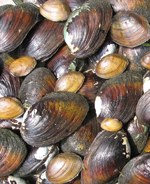 The Tennessee Unit is currently staffed by a Leader, an Assistant Leader, one post-doc, two full-time research assistants, one full-time technician, and a secretary. Normally, 8-10 MS and PhD graduate students are supported by a variety of funded research projects dealing with the study of fish and mussels. The Tennessee Unit has a very close working relationship on the campus of Tennessee Tech with the Biology Department and the Center for the Management, Protection, and Utilization of Water Resources (Water Center). The Water Center has state-of-the-art analytical and computer laboratories, plus support personnel that provide our students with opportunities to engage in a wide variety of environmental research. The Water Center often supports Tennessee Unit students with research stipends, travel funds, and equipment. The Tennessee Unit is currently staffed by a Leader, an Assistant Leader, one post-doc, two full-time research assistants, one full-time technician, and a secretary. Normally, 8-10 MS and PhD graduate students are supported by a variety of funded research projects dealing with the study of fish and mussels. The Tennessee Unit has a very close working relationship on the campus of Tennessee Tech with the Biology Department and the Center for the Management, Protection, and Utilization of Water Resources (Water Center). The Water Center has state-of-the-art analytical and computer laboratories, plus support personnel that provide our students with opportunities to engage in a wide variety of environmental research. The Water Center often supports Tennessee Unit students with research stipends, travel funds, and equipment.
Active Projects:
Distribution of fish in and near the heated effluent of a power plant
In this study several species of fish are being tagged with ultrasonic transmitters and their location and the temperature of the water they are inhabiting near a power plant is being monitored continuously with an array of submersible receivers. These data will be used by power producers and regulators to redefine the upper limits of temperature that fish can be exposed to during routine power plant operations.
Predicting the effects on endangered mussels from incremental decreases in minimum flows
The objectives of this study are to determine the level of reduction in minimum flows that affects the behavior, growth, gametogensis, spawning and survival of freshwater mussels. Determine if mussel responses to incremental reductions in flow are of a threshold, linear, or curvilinear nature.
Assessment of biotic integrity, water quality and habitat, fishing pressure, and economic value of the fishery in the Caney Fork River below Center Hill Dam
Our specific objectives are to (1) monitor water quality seasonally at five stations in the Caney Fork River below Center Hill Dam; (2) develop an index of biotic integrity for the fish community in the Caney Fork River; (3) describe temporal and spatial variation in biotic integrity; and (4) assess key attributes of the recreational fishery for trout in the river and estimate its economic value.
Find more Active and Completed Projects here.
North Carolina Cooperative Research Unit
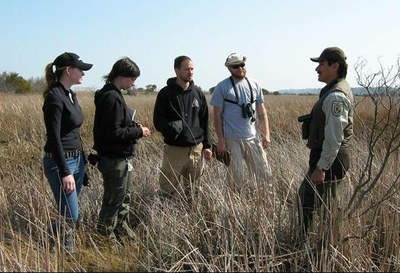 Research at the North Carolina Unit aims to address questions in fisheries and wildlife conservation and management that are of interest to state and federal natural resource management agencies, conservation organizations, and private land owners. Areas of emphasis include conserving and managing rare and endangered fish and wildlife on public lands, understanding the factors that affect fish population size and community composition, developing habitat models to explain why species of fish and wildlife live where they do, and developing new approaches to estimating species diversity and abundance. Research at the North Carolina Unit aims to address questions in fisheries and wildlife conservation and management that are of interest to state and federal natural resource management agencies, conservation organizations, and private land owners. Areas of emphasis include conserving and managing rare and endangered fish and wildlife on public lands, understanding the factors that affect fish population size and community composition, developing habitat models to explain why species of fish and wildlife live where they do, and developing new approaches to estimating species diversity and abundance.
Active Projects:
Assessing the effects of the National Park Service prescribed fire program on the breeding bird community in Great Smoky Mountains National Park
Characterizing the habitat and identifying breeding birds will guide the park in fire management decisions and help improve habitat. This project will provide fundamental information to evaluate possible reintroduction of red-cockaded woodpeckers and target habitat management for other bird species of concern.
Research and Applications in Support of the National Gap Analysis Program
The goals of this project are to efficiently monitor landscape changes, extend the breadth of species-habitat models for assessments at multiple scales, and refine and develop BBNs and decision analysis techniques aimed at evaluating and implementing adaptation strategies by DOI Climate Science Centers (CSC) and the Land Conservation Cooperatives (LCCs).
A comprehensive examination of endocrine disrupting compounds and intersex fish in North Carolina water bodies
To address these issues and significant data gaps in North Carolina water bodies, we have developed the following aims with the goal of establishing a comprehensive understanding of the impact of EDC contaminants to fisheries in the state.
1. Develop a GIS-based map of potential sources of Endocrine Disrupting Compounds (EDCs) in North Carolina water bodies.
2. Conduct a statewide survey for the presence of EDCs and intersex in common fish in North Carolina water bodies.
3. Quantify seasonal dynamics of EDCs and intersex in NC water bodies and fish.
4. Conduct intensive field research and experimental bioassays on intersex fish and EDC dynamics in the Pee Dee River Basin.
5. Laboratory assessment of endocrine disruption and intersex in Pee Dee River water mixtures.
Find more Active and Completed Projects here.
South Carolina Cooperative Research Unit
Alabama Cooperative Research Unit
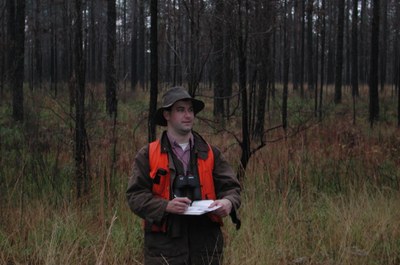 The Alabama Unit has identified four areas in which to concentrate its research efforts: 1) determining the effects of forest management techniques on wildlife species, 2) investigating the ecology and management of stream corridors, 3) investigating the status, life history and habitat requirements of endangered or threatened species to obtain information necessary for the development of comprehensive recovery plans, and 4) investigating the ecology and management of fish and wildlife species on landscape scales. The Unit will not be restricted to these areas of investigation; however, it will work towards the development of comprehensive research programs in each. The Alabama Unit has identified four areas in which to concentrate its research efforts: 1) determining the effects of forest management techniques on wildlife species, 2) investigating the ecology and management of stream corridors, 3) investigating the status, life history and habitat requirements of endangered or threatened species to obtain information necessary for the development of comprehensive recovery plans, and 4) investigating the ecology and management of fish and wildlife species on landscape scales. The Unit will not be restricted to these areas of investigation; however, it will work towards the development of comprehensive research programs in each.
Active Projects:
Grassland Bird Occupancy Modeling
Estimating grassland bird habitat use and associations to parameterize a habitat management projection model for decision analysis on grassland bird habitat management.
Deer Density And Recriutment
We are using time lapse photography to estimate white-tailed deer demographic rates for use in a population model that will inform harvest management decision analysis.
Optimal Conservation Strategies To Cope With Climate Change
- Identify focal species for planning conservation actions within each ecoregion. Focal species should represent the species most sensitive to resource and process limitations in the southeastern region (Lambeck 1999) and should represent a broad array of taxa.
- Assess the state of populations of focal species based on the best available information. This may include survey data (e.g. Breeding Bird Surveys, mid-winter waterfowl surveys, North American Amphibian Monitoring Program) or expert opinion.
- Determine population objectives and habitat objectives for focal species that will ensure their persistence.
Find more Active and Completed Projects here.
|


 The
The  The
The  The
The  The
The  The
The  The
The  Research at the
Research at the 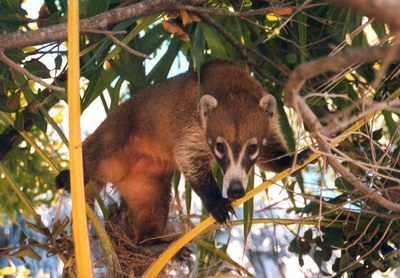 Research at the
Research at the  The
The 



















